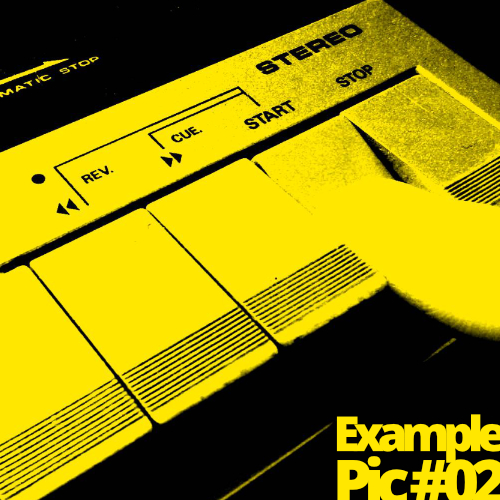
flatMark
No database required, no overhead in sight — just Markdown and a sprinkle of PHP. Ideal for small websites, portfolios, or documentation, it delivers content directly from the filesystem. Just edit your Markdown files and go.


flatMark
A lightweight, flat-file Markdown-based website generator
Features
- Lightweight and fast
- Easy-to-edit content, just Markdown files
- Just requires basic php, no database or build-steps needed
- Auto-parses Markdown to HTML using Parsedown
- Supports single-language and multi-language setups
- Metadata for title, description, and robots meta tag for each site (YAML font matter)
- Provides simple Shortcodes to arrange and style your content (e.g. columns, different backgrounds)
- Basic, responsive Theme which you can customize and enhance
- Option to use individual Templates for single pages
Demo
The Demo Website is an exact copy of the GitHub Repository and doubles as the documentation site.
How It Works
FlatMark dynamically converts Markdown files in the folder /pages (or /pages-XX for multilingual sites) into HTML pages. Find the full markdown-syntax here: www.markdownguide.org/basic-syntax
URL Structure
| Setup | Example URL | Maps to File |
|---|---|---|
| Single Language | /about |
/pages/about.md |
| Multi-Language | /en/about |
/pages-en/about.md |
Folder Structure
/flatmark/
│── /files/ # Files (images, pdfs etc.)
│── /pages-en/ # English pages
│── /pages-de/ # German pages
│── /theme/ # Styles, assets and templates of the theme
│── config-basic.php # Single-language setup
│── config-multilang.php # Multi-language setup
│── index.php # Main file
│── .htaccess # URL rewriting
│── README.md # DocumentationInstallation
- Download the latest release of flatMark which contains a simple example-page
- Upload the files to your web server.
- Configuration choose between single or multilanguage-setup in
index.php(default: multi-language) - Edit content inside
/pages(or/pages-XXfor multilingual sites). - Done! Your site is ready.
Requirements
- PHP 7.4+
- Apache/Nginx with mod_rewrite enabled
Configuration
The default-configuration is for the languages English(en) and German(de).
If this is already what you want, you do not have to change anything and you can delete the file config-basic.php as it is only needed for the single-language setup.
Multi language setup (default)
The automatic language-redirection is described with the default-setup with folders for Engish and German pages:
When the website is opened in a browser with German language-settings, the request is automatically redirected to the pages in the folder /pages-de. All requests with brower-settings in other languages than german, are redirected to the pages in the folder /pages-en (default-language).
- You can edit the languages of your website in the file
config-multilang.phpby editing the language-codes in this line:$supportedLanguages = ['en', 'de'];The first language-code acts as the default-language ('en' in this case). - Add language (example):
If you want to add French, change $supportedLanguages to$supportedLanguages = ['en', 'de', 'fr'];and add the folder/pages-frfor the French pages. - Remove language (example):
If you want to remove German, change $supportedLanguages to$supportedLanguages = ['en', 'fr'];and remove the folder/pages-defor the German pages.
Single language setup
- If you only want a website with a single language, open
index.phpand change the linerequire 'config-multilang.php';torequire 'config-basic.php'; - Delete the file
config-multilang.phpas it is only needed for the multi-language setup. - Rename the folder
/pages-ento/pagesand delete the folder/pages-de - Open the file
config-basic.phpand define the language of your website by editing the language-code in this line:$lang = 'de';('de' stands for German this case)
Find all available language-codes here: HTML Language Code Reference
Defaults
Each pages-folder must contain at least these files for the website to function:
-
01-header.md
Edit this file to change logo, title, subtitle of the website and the main menu. The main-menu must be a list of links to function correctly. You also have the option to add further elements like contact-details or a language-menu by wrapping them in the shortcode{extras}{/extra}. -
02-footer.md
Edit this file to change the text in the footer and the footer-menu. The footer-menu must also be a list of links to function correctly. The shortcode{year}will display the current year. -
home.md
This file is the default startpoint of your website. -
404.md
Edit this file to change the error-message which is shown if a page is not found.
Metadata
Each Markdown page can include optional metadata at the top of the file (Format: YAML font matter). These values will be automatically extracted and used in the
section of the generated HTML page.Example Markdown file (about.md) with metadata:
---
title: About Us
description: Learn more about our mission and team.
robots: index, follow
---
# Welcome to Our Company
We are committed to providing the best services...- title → Sets the
<title>of the page. Defaults to the filename if not provided. - description → Used for the
<meta name="description">tag (important for SEO). Defaults to an empty string if not set. - robots → Controls search engine indexing (index, follow / noindex, nofollow). Defaults to index, follow.
- layout → Sets individual template for the page, find further infos below under "Customization".
Shortcodes
flatMark supports simple shortcodes for structured content. You can see all shortcodes in action on the Examples-Page of theDemo Website. Here are just two examples:
{columns 50-50}
Left column
{columns-seperator}
Right column
{/columns}
{background color-01}
This content has a colored background.
{/background}These shortcodes are part of the theme and are all located in the file /theme/functions.php.
You can edit this file to change existing shortcodes or add even more.
An example-page with all shortcodes is provided with the installation: /pages-en/examples.md
Customization
All customizable parts of flatMark are located in the theme/ folder:
- Styling with CSS main-stylesheet:
theme/css/style.css - Interactive with JavaScript:
theme/js/presets.js - Additional php-fuctions (like Shortcodes):
theme/functions.php - Default HTML template:
theme/index.php
Additional assets like fonts, favicons and images can also be placed in the theme-folder to keep everything neatly organized in one place.
Templates
Further HTML-templates can be added in the theme folder and addressed via metadata. Example: For a page including the metadata layout: blog.php the template theme/blog.php would be used, instead of the default-template theme/index.php.
flatMark as CMS
If you are not a programmer and used to work with FTP-client and texteditor you might prefer a Content-Management-System (CMS) to edit your website. So how would you define a simple CMS? Basically it would allow you to do the following directly in your Browser:
- Login via username & password
- Edit website content in a text-editor
- Upload/Manage files
- Change settings
Even if flatMark itself does not provide that, you might already have resources at hand which you can use to do exactly that!
- Webhoster
Your webhoster might already provide a seperate WebFTP-Login with a build-in Text-editor.
Example: all-inkl webftp - Nextcloud
If your are using Nextcloud and the default-plugin "External Storage", you can use that to access your flatMark-Installation via FTP. For Markdown-files Nextcloud even provides a WYSIWYG-Editor by default.
Website: Nextcloud - Tinyfilemanager
If you do not have none of the options above, you still can install this simple file-manager which is actually just one single php-file. Just upload it to the root-folder of your flatMark-Installation and access it via your browser! (Do not forget to change the password in that file before you upload it)
Website: tinyfilemanager
These are only 3 options how you can access your flatMark-Installation, but there might be more.
License
FlatMark is released under the MIT License.
Credits
This project uses;
- Parsedown — MIT License
- Open Sans font — Apache License 2.0
